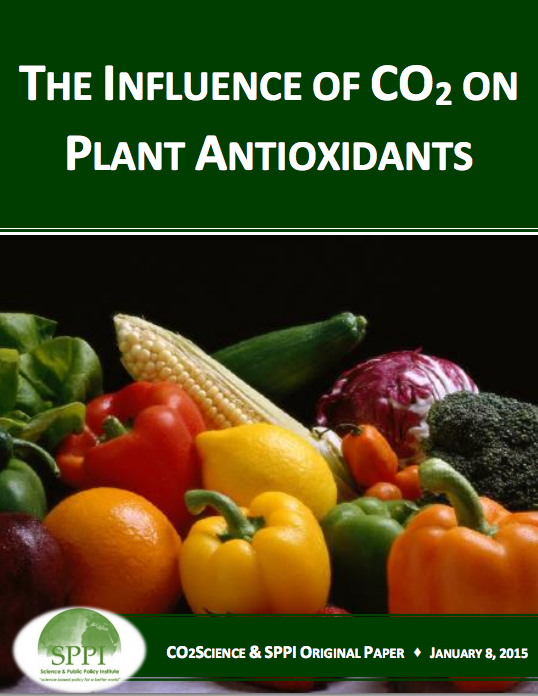News / Science & Technology
The Influence of CO2 on Plant Antioxidants
Center for the Study of Carbon Dioxide and Global Change. "The Influence of CO2 on Plant Antioxidants.” Last modified January 8, 2015. http://www.co2science.org/subject/a/summaries/antioxidants.php.

Environmental stresses induced by exposure to pollutants, drought, intense solar radiation and high air or water temperatures generate highly-reactive oxygenated compounds that damage both terrestrial and aquatic plants. Ameliorating these stresses typically involves the production of antioxidant enzymes that scavenge and detoxify the highly-reactive oxygenated compounds.Hence, when stresses are present, concentrations and/or activities of antioxidants in plants are generally observed to be high; and a good question to ask, therefore, is how atmospheric CO2 enrichment impacts this relationship and what the observed results imply. A number of researchers have done just that, and in this summary we highlight what they have learned.
In a study of two soybean genotypes, Pritchard et al.(2000)1 reported that three months' exposure to twice-ambient CO2 concentrations reduced the activities of superoxide dismutase and catalase by an average of 23 and 39%, respectively. Likewise, Polle et al. (1997)2 showed that two years of atmospheric CO2 enrichment reduced the activities of several key antioxidative enzymes, including catalase and superoxide dismutase, in beech seedlings. And Schwanz and Polle (1998)3 demonstrated that this phenomenon can persist indefinitely, for they discovered similar reductions in these same enzymes in mature oak trees that had been growing near natural CO2-emitting springs for 30 to 50 years.
The standard interpretation of these results is that the observed reductions in the activities of ntioxidative enzymes under CO2-enriched conditions imply that plants exposed to higher-than-current atmospheric CO2 concentrations experience less oxidative stress and thus have a reduced need for antioxidant protection. This conclusion further suggests that "CO2-advantaged" plants will be able to funnel more of their limited resources into the production of other plant tissues or processes essential to their continued growth and development.
